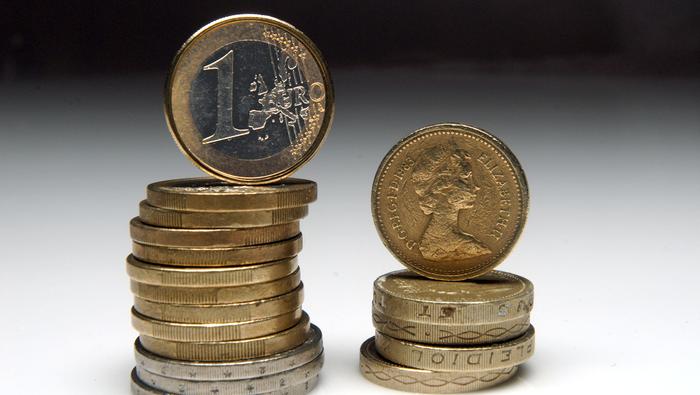Conventional investing strategies involve buying assets that are believed to have the potential for growth. Ideally, most traders expect to profit when whatever they buy performs strongly in the market. Short traders do the exact opposite! Short-selling in forex and stock involves identifying and investing in markets that might be poised for a downswing.
A short-seller only takes a position in the market if they have a negative outlook on the expected performance of an asset. Such might be the case if you, for example, see no growth potential in that asset or think that the market is headed for a downturn.
To a novice trader, it might be an absurd idea that one can get impressive returns by capitalizing on financial instruments whose prices are expected to decline. In this article, we are, therefore, going to delve into the basics of short-selling as a strategy that helps traders find opportunities in falling markets.
Short-selling Definition
Financial traders refer to short-selling in different ways—some call it ‘shorting’ others use the phrase ‘going short.’ Regardless of what you call it, short-selling mainly involves going against the traditional trading mantra of buying low and selling high.
In a typical short-sell, the trader sells a borrowed asset hoping that its price will drop. The asset is later repurchased at a new, lower price, thereby allowing the trader to make a profit.
Short-selling mostly happens in the stock market. However, it may happen with many other financial instruments, including forex, crypto, commodities, indices, etc.
How to Short A Stock 
In the 17th century, Isaac Le Marie bought the Dutch East India Company shares. This Dutch trader was, however, expecting that the share price would drop significantly. His story gets a little dark, though; he was later caught telling lies to cause a decline in the stock’s price artificially! Nevertheless, Le Marie might, in fact, have unknowingly invented the concept of short-selling as we know it today.
Here’s how short-selling can help a trader profit from declining stock prices.
- The trader borrows the shares they wish to short from people who already own them. However, this is done through a stockbroker or fund manager—the trader isn’t directly involved in the borrowing.
- The trader’s borrowed shares are then sold in the open market.
- A time later, when the share prices fall, the trader buys back the shares at the new reduced prices.
- The lender takes back the borrowed shares, and the trader pockets the profit.
Short Selling Stock Example
Let’s put this into perspective:
- A trader wants to short Company X shares. He/she may borrow 10,000 shares from their local index fund manager, for a fee, and sells them at $1 each.
- The sale of these shares will give the trader $10,000 minus the borrowing fee.
- Later on, Company X shares fall to $.80 per share. The trader then buys back the 10,000 shares at $8,000.
- The trader returns the shares to the lender and enjoys a $2,000 profit.
Impact of Short-Selling in Stock Market
Short trading has its risks. Let’s say you buy a share, and its price drops to zero; you’d end up losing 100% of your money. On the other hand, there’s no ceiling on how high the prices may rise—and technically, a short seller loses money if the share prices go up instead of down.
Remember that when shorting a stock, you are betting with borrowed money. Thus, short- selling tends to be highly leveraged, which significantly magnifies any losses you incur.
In spite of the existing risks of short-selling in the stock market, there are several advantages of taking a short stock position, including:
- There’s potential to reap massive earnings
- It provides a way for traders to survive in a bear market
- Shorting a stock can be speculative and can be used for hedging purposes. Hedging is the practice of holding two market positions concurrently. It allows the trader to offset the losses incurred from one position with the profits gained from the short stock position.
- Short-selling is applicable to multiple financial tools and securities. With the rise of online trading and numerous derivative products, a trader may take a short position in several different markets simultaneously.
How to Short A Currency
Much like short-selling in the stock market, short-selling in foreign exchange involves predicting and anticipating the depreciation of a particular currency.
Forex Short-Selling Example
Let’s consider the mechanics of short-selling in forex:
- Let’s say that you’re confident that the Euro rate will fall soon. You are going to consider the USD/EUR currency pair where the USD is the base, and the EUR is the quote currency.
- The USD/EUR price is, say, 100.00, so you click sell.
- You wait for a while, the price drops to 98.00, and you close the trade.
- Simple mathematics shows that you’ll have made 200 pips of profit by shorting currency in a forex deal.
Impact of Short-Selling in Forex Market
As is the case with other trading strategies, there’s always the risk of making a bad call when short selling in forex. One may, for example, find themselves on the wrong side of the trade because they misread the likely performance of currency and took an unduly pessimistic view of its prospects.
In other times the trader’s initial analysis might have been correct, but subsequent unforeseen events drive them into a loss.
For example, in the past, the Bank of England would try to burn the short-seller’s fingers with a surprise action such as increasing the interest rates or buying sterling from the market. Such actions are often referred to as bear traps, which when successfully sprung, they may leave a trader with enormous financial losses.
Short-Selling in Forex Vs Stock
In a nutshell, short-selling speculates on a falling market—whether stock or forex. The major difference lies in the assets traded. In the stock market, you short shares while short selling in forex involves currencies.
If the underlying market dips, you stand to make a profit.
There’s also high exposure to losses if the asset’s prices don’t behave as you had predicted. If an asset’s price goes up, a trader’s loss could potentially be unlimited.
Hence, it’s highly recommended that if you are going to short an asset, be it stock or forex; you must have a risk management strategy in place to avoid significant losses
Key Things to Remember
Before shorting currency or stock:
- Perform a complete fundamental analysis on the asset beforehand
- Be mindful of your short position size- the larger your position size, the higher the risk. However, a minimal position might not yield any significant profit.
- Set up trading alerts. These alerts notify when your market reaches a particular level. The notifications will help you decide what steps to take next.





